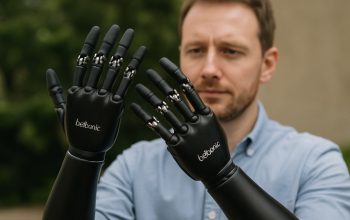- Europe’s biotech sector, controlling 12% of the global market, is focused on innovation and biosecurity excellence.
- Key discussions highlight the need to balance groundbreaking biotech innovations with stringent safety standards.
- Irene Sacristán Sánchez emphasizes biotechnology’s dual role in enhancing biosecurity and requiring robust oversight.
- MEP Tomislav Sokol views strong EU safety standards as a non-negotiable strength, advocating for streamlined regulation.
- Jeroen Groenewegen-Lau contrasts Europe’s approach with China’s, highlighting a need for refined competitive strategies.
- Claire Skentelbery stresses global partnerships to tackle transnational biosecurity challenges like climate-led pathogen spread.
- Velislava Petrova warns about AI’s dual potential for innovation and risk, advocating for proactive safety integration.
- Europe’s challenge is to lead biotech through a synergy of safety and innovation, setting future global standards.
Amid the intricate tapestry of Europe’s bustling biotech sector, which commands about 12% of the global market, a new dialogue is taking center stage: How can Europe thrive as an innovator while ensuring that its biosecurity standards set the global benchmark? This pressing question was at the heart of a recent roundtable organized by the Centre for Future Generations and Euractiv, where industry leaders and policymakers grappled with an evolving landscape that demands both stringent safety and dynamic growth.
Picture a future where biotechnology isn’t just confined to labs and patents, but radiates across various industries—ushering advancements in healthcare, agriculture, and beyond. Yet, as Europe sets its sights on expansion, it stands at a crossroads, confronting the dual imperatives of fostering groundbreaking discoveries while maintaining its revered safety protocols.
At the forefront of this discourse, Irene Sacristán Sánchez of the European Commission highlighted biotechnology’s dual role—not only as a bridge to biosecurity through innovations like disease-resistant crops but also as a tool that needs rigorous oversight. The balancing act is clear: embracing transformative technologies while preempting risks—be they accidental or intentional.
But is caution a foe to competitiveness or its safeguard? MEP Tomislav Sokol views the EU’s robust safety standards as a strength, an anchor that must not be compromised even as debates on regulatory efficiency unfold. For Sokol, trimming bureaucratic excess, such as redundant certifications for longstanding medical devices, offers a pragmatic path to bolstering Europe’s competitiveness without lowering safety bars.
Looking to the East, Jeroen Groenewegen-Lau’s insights remind us that China’s mix of innovation and ironclad regulation presents both a lesson and a contrast—challenging Europe to refine its approach to global biotech leadership.
Biotechnology’s intrinsic connection to biosecurity was emphasized by Claire Skentelbery of EuropaBio, who underscored the necessity of global partnerships to navigate the transnational nature of key challenges such as climate-led pathogen spread. Here, Europe’s high safety standards not only ensure protection but act as a catalyst for cutting-edge developments in diagnostics and treatment.
Yet, amid the promise, new specters loom. The rise of AI in biotechnology signals unprecedented possibilities, but Velislava Petrova from the Centre for Future Generations cautions against the unbridled momentum of AI-driven innovations, such as AI-designed pathogens, which present untold risks alongside solutions. For Petrova, embedding safety into the cradle of innovation—not merely reacting to its consequences—is paramount.
In this ever-shifting theatre of biotech, Europe faces a pivotal moment. Its challenge is not solely about being a hub of innovation; it is about sculpting a narrative where safety and progress march in tandem. The continent’s next steps will determine whether it leads with foresight or grapples with hindsight, charting a course that could redefine the global standards of tomorrow.
Redefining Global Standards: How Europe Can Balance Biotech Innovation and Biosecurity
Introduction
The European biotech sector commands approximately 12% of the global market, indicating its significant role and influence. However, the pressing discussion isn’t solely about market share. It’s about navigating the path of innovation while setting unparalleled global biosecurity standards. This delicate balance was the focal point of a recent roundtable organized by the Centre for Future Generations and Euractiv.
The Future of European Biotechnology: Innovations and Challenges
Biotechnology is no longer confined to the laboratory. It has applications in healthcare, agriculture, and numerous other industries. Europe aims to expand these applications but must simultaneously maintain its revered safety protocols. Here’s a deeper dive into how Europe can achieve this dual imperative:
Market Forecasts and Industry Trends
The global biotechnology market is poised for significant growth due to increasing research and innovation. The European sector is expected to witness advancements in:
– Healthcare: Development of precision medicine and gene therapies.
– Agriculture: Innovations in genetically modified organisms (GMOs) for better crop yield and resilience.
– Sustainability: Bioplastics and biodegradable materials reducing environmental footprint.
For more insights, visit Statista for up-to-date statistics on biotech trends.
Key Industry Insights
– Biosecurity through Innovation: Irene Sacristán Sánchez emphasizes the dual role of biotechnology as an enabler of innovation and a tool requiring rigorous oversight. Disease-resistant crops are a prime example.
– Safety and Competitiveness: MEP Tomislav Sokol contends that the EU’s robust safety standards are an advantage. Although discussions about regulatory efficiency are ongoing, unnecessary bureaucratic processes should be minimized to enhance competitiveness.
– China’s Biotech Approach: Jeroen Groenewegen-Lau’s examples highlight China’s blend of innovation and stringent regulation, providing Europe with insights on refining its global biotech leadership strategy.
Real-World Use Cases and Challenges
– Global Partnerships: Claire Skentelbery from EuropaBio stresses the need for international collaboration to address transnational issues like pathogen spread due to climate change.
– AI in Biotechnology: Velislava Petrova raises concerns about AI’s role in designing pathogens, emphasizing that safety must be embedded in innovation from the get-go.
Pros and Cons Overview
Pros
– High Safety Standards: Ensures trust and dependability in biotechnological advancements.
– Innovation Potential: Europe, with its advanced research infrastructure, is poised for groundbreaking discoveries.
Cons
– Bureaucratic Hurdles: Over-regulation can stifle innovation and delay the release of new technologies.
– Global Competition: Competing with less regulated markets might challenge Europe’s pace and adaptability.
Pressing Questions & Recommendations
1. How can Europe remain competitive while upholding strict safety protocols?
Europe must streamline regulatory processes without compromising safety, adopting a flexible yet rigorous approach to innovation.
2. What roles do partnerships play in both innovation and biosecurity?
Partnerships are crucial for sharing knowledge, jointly tackling global challenges, and enhancing biotechnological applications worldwide.
Quick Tips for the Biotech Sector
1. Streamline Regulations: Identify and eliminate redundant certification processes.
2. Leverage AI Safely: Invest in research focused on safe AI applications in biotech.
3. Promote Cross-Border Collaborations: Foster alliances with global leaders to navigate challenges effectively.
Conclusion
Europe stands at a crossroads in the biotech arena, where its next steps will either set a precedent for global standards or necessitate adaptations. By harmonizing innovation with robust protocols, Europe can lead the charge toward a future where safety fosters, rather than hinders, technological progress.
For further reading on European biotech and innovation, refer to Euractiv and Europa.



